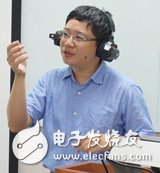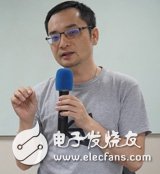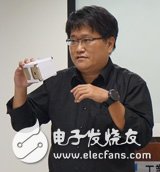Augmented Reality (AR), Virtual Reality (VR), and Mixed Reality (MR) applications have experienced a hurricane this year. Since the development of virtual reality technology in the 1950s, scientists and engineers have all tried their best to create another experience, and after the wave of smart glasses and wearable devices from Google Glass, including Facebook, HTC, Sony, Samsung Wearable products have been launched with major technology companies such as Microsoft, and hope to create an unprecedented sensory experience through virtual reality technologies such as AR/VR/MR.
According to market research firm Digi Capital, the market value of AR/VR will reach $120 billion by 2020. In fact, AR/VR/MR technology has already carried out related applications or experiments in the fields of live broadcasting, real estate, fashion, medical and military. The potential of virtual application market is endless, and there is room for development in all walks of life. How to cut and tap and master Among them, the big business opportunities are the most important challenges for the manufacturers at this stage.
AR/VR market heats upBecause the smart phone market is developing satisfactorily, relevant industry players have been diversified in recent years, and wearable devices have become popular investment projects. Lin Jingwen (Fig. 1), leader of the intelligent network communication system research institute of the strategy committee, said that typical VR applications Entertainment-oriented, providing users with a closed space operation, emphasizing the Immersive experience; and AR can also be extended to work, navigation and other fields, is the superposition of virtual objects in the real world, emphasizing wearing See through experience, generally believe that the market development potential is greater than VR.
In the past two years, international companies have also invested in publishing their own wearable products, and actively deployed the ecosystem (ecosystem). Microsoft has used its operating system advantages to promote the MR hardware and software platform. The product HoloLens recently caused no problems in the market. Less attention; Sony relies on the PS4 global sales of more than 60 million units and carries dozens of game masterpieces, PlayStaTIon VR officially listed on October 13th, according to media reports on the first sale day, selling hundreds of thousands of units; and Facebook CEO Zu Kebo is very optimistic about this field, so in 2014, he invested $2 billion to buy potential company Oculus, and invested a large amount of money to actively build a platform and ecosystem in the role of technology leader.

Figure 1 Lin Jingwen, head of the Institute of Intelligent Netcom Systems, said that typical VR applications are entertainment-oriented, providing users with a closed space operation that emphasizes the Immersive experience.
In addition, Google can be said to be the first to invest in this field. Although Google Glass has caused some controversy, it has also successfully led the trend. Through the advantages of Android in smart handheld devices, the Daydream and Tango platforms will continue to be launched in the near future. Become an AR/VR vehicle; HTC develops the Vive platform with the support of Valve technology, and the two parties jointly promote the ecosystem and also develop their own VR application stores. In addition, Epson's Moverio and Samsung's Gear VR are not absent in the virtual application industry, and their ducks are in the water.
In the application of AR/VR/MR products, Lin Jingwen pointed out that display imaging, system interface/operation, endurance, computing power, price and market application are the key points for the development process. Among them, head-mounted device display imaging currently has two more common technologies: curved reflection and waveguide technology; in the operation mode, there are eight interactive control technologies, including: touch, voice, sensing, eye movement control, bone conduction , gesture control, brainwave control, object recognition, etc.

Figure 2 Unity technology professional lecturer Luo Zhida said frankly that the current application of AR/VR/MR in the industry is still very preliminary. It is expected that better commercial products and applications will emerge in 2019 and 2020.
AR/VR software design is responsible for product success or failureMore and more virtual application experience products are on the market, and they are already dazzled and invisible to consumers. In fact, for AR/VR/MR applications to achieve critical success, software is the key, because there are A good virtual experience can drive the growth of the industry. Unity Technology lecturer Luo Zhida (Figure 2) believes that the perfect combination of hardware and software can create the immersion of VR applications. In general, the more immersive the equipment, the more equipment The quality and performance of the products are high, such as Vive and Gear, but at the expense of convenience and popularity, because the price is relatively high, so like Daydream, Carboard hopes that consumers can easily experience VR applications.
VR is strictly a deceptive experience, so the human body is very sensitive to the VR experience. The bad software design is easy to cause discomfort. Luo Zhida admits that the current industry development of AR/VR/MR is still in progress. In the initial stage, it is expected that better commercial products and applications will emerge in 2019 and 2020. Moreover, no matter whether it is a heavy or lightweight wearable device, no device is the best VR experience. The human eye can focus on the target only in the range of 25∼30 degrees up and down and left and right, so it should be accurate. The eye tracking technology makes the image in the focus range clear, and the rest of the blur display is fine.

Figure 3 Associate Professor Wang Shengming from the Department of Interactive Design, Taipei University of Science and Technology explained that from the fundamental difference in the experience provided by AR/VR, AR augmented the reality, and VR was a reality.
How to design a simple and enjoyable experience from the human senses? Associate Professor Wang Shengming (Fig. 3) from the Department of Interactive Design, Taipei University of Science and Technology explained that from the fundamental difference in the experience provided by AR/VR, VR only focuses on the content provided, with highly immersive characteristics, while AR is combined with reality. Simply put, AR augments the reality, and VR aims to get people out of reality. At present, there are many real cases showing that the experience of being too immersed will have sequelae for the temporary external force intervention, and there are many softwares or products that are not designed enough to make the user have obvious physiological discomfort.
Through the cross-domain integration architecture of design thinking, we can discover the design of happiness. Wang Shengming explained that the architecture has several key points: development trends and forward-looking application analysis, cross-disciplinary brainstorming and integration, and mastery of users. The center's insights and design, integration of technology application development and interface design, and finally the introduction of system use scale and scientific measurement, to ensure the quality of the design in a rigorous way.

Figure 4 Wang Weizhang, chief of the virtual reality technology in Taiwan, pointed out that the AR application, which is commonly used by Marker, is actually a narrow AR technology and a kind of MR application.
Aluminum Heat Reflect Fiberglass Hose
Aluminum Foil Insulation Protective Sleeve,Aluminum Foil Fiberglass Tube,Aluminum Foil Fiberglass Protective Sleeve
Shenzhen Huiyunhai Tech.Co., Ltd. , https://www.cablesleevefactory.com